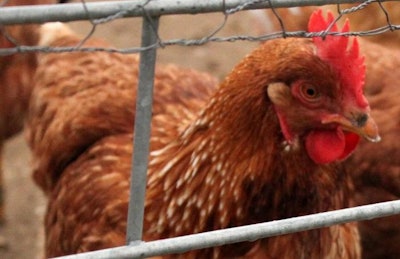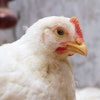
Injurious pecking may be reduced in layers with intact beaks by reducing stressors in the layer house and giving birds more to do.
Beak trimming is banned in several countries and is under consideration in several more. At this year’s trade event EuroTier, held in Hanover, Germany, research and on-farm experience was presented. Germany is due to phase out beak trimming in 2017 and the country’s egg producers are looking to minimize feather and vent pecking and cannibalism as the regulatory environment changes.
Mona Giersberg of the University of Veterinary Medicine Hannover pointed out that beak trimming was never a cure for injurious pecking, it simply made any resultant injuries less serious. The key to reducing the behavior, she argued, was to discover which factors encouraged birds to exhibit this behavior.
Various contributing factors
Her research has found that there are various contributing factors that encourage birds to peck each other, and that the way pullets are managed will influence how they behave during the layer phase.
For example, research on pullet farms in Germany found that, too often, stocking densities were too high, there was insufficient litter, birds were always kept indoors, and there was a lack of uniformity, little stimulation and too much dust.
Similar weak points were identified during the layer phase but, additionally, Giersberg cited lack of access to the scratching area and boredom, issues with feed, light, genetics, stocking densities and air quality.
She also pointed out that modern feeding systems, by making feed so easy to access, result in birds not pecking as much as when they have to look for food. During the light phase, birds can peck up to 15,000 times, and today's management systems do not encourage them to satisfy this need.
Trial and error on-farm
As part of Germany’s beak trimming phase-out, some farmers are experimenting with management systems to prevent injurious pecking.
The Mardy family, which has a flock of 20,000 birds, stopped beak trimming in 2014, and has experimented with various stimuli.
Most have been relatively simple, but have, nevertheless, been through a period of trial and error.
For example, carrots scattered on the floor of the layer house encouraged birds to peck, but were consumed within half an hour, making the stimulation short-lived. Now, carrots are hung in wire baskets a little higher than is comfortable for the birds to reach. This means they must work to access them, helping to reduce boredom.
Similarly, 16 alfalfa bales are hung throughout the house. Initially, bags of straw were also hung in the house, but these have subsequently been moved to the patio area. There are also pecking discs distributed throughout the house.
In addition to the permanent stimuli, layers are also given corn silage shortly after feeding. While this has proved beneficial, how it is delivered has had to be adjusted to find the optimal level.
Initially, corn silage was dropped from two “enrichment lines” seven times a day, but this has now been reduced to five deliveries. The more regular deliveries were problematic because feed consumption fell. Birds ate too much silage and this influenced growth but, in their excitement to access the silage, birds were jumping on top of each other to reach it, resulting in scratching injuries.
Stocking density in the house is relatively low. Although the house has a capacity for 24,000 birds, only 20,000 are reared.
Mardy notes that the various stimuli introduced into the flock have worked for him, but recognizes that the approach may not work for all farmers.He cautions that while giving birds corn silage results in a great deal of stimulation, this must not be at the expense of a significant change in feed consumption.


















